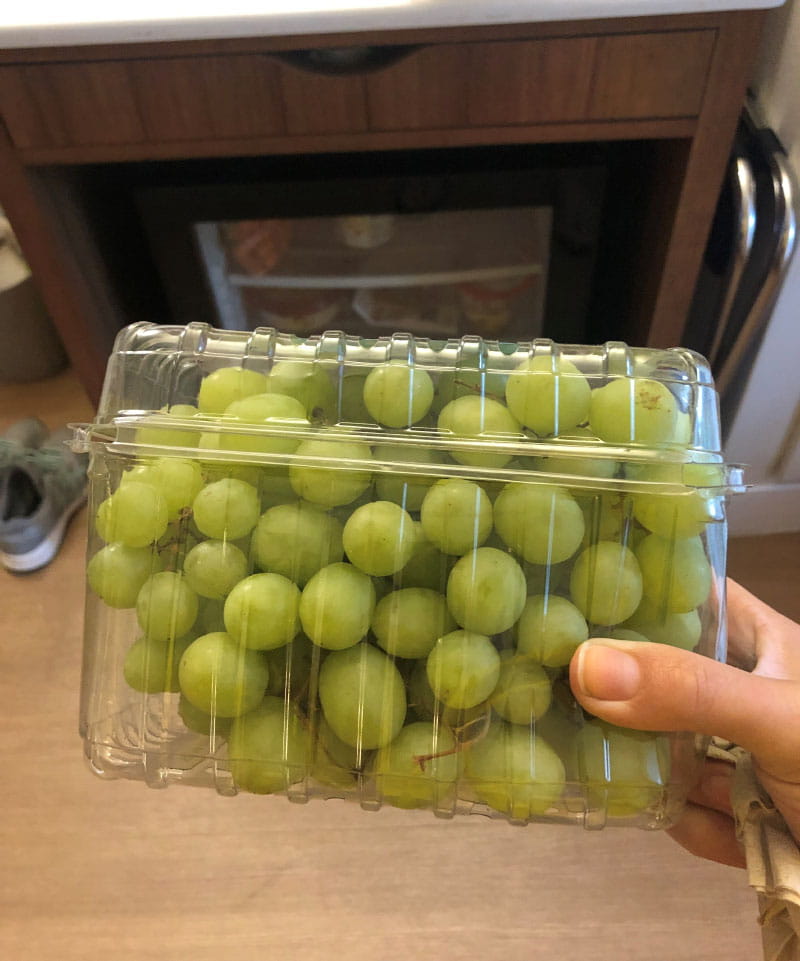Ready for vacation? Eat well and enjoy your travels with these healthy tips
By Michael Merschel, American Heart Association News

You've got your swimsuit, sunglasses and a beach- or hammock-worthy novel ready to go. But does your vacation checklist also have a plan for healthy eating?
Sure, escaping your routine might be the whole point of hitting the road. But eating well not only boosts your health, it also can energize your adventures as well, nutritionists say. Here are some of their ideas.
Plan those snacks
For flyers in particular, finding healthy food in transit can be a challenge, said Katie Krieg, a registered dietitian in Dallas who's also a travel agent. The most affordable options at airports tend to be chips or candy – high in carbohydrates and low in fiber and protein.
Our bodies break down such foods quickly, she said, which means that soon after eating, travelers are saying, "Dang it, I'm hungry again."
Her solution is to pack snacks that will get past airport security checkpoints and keep her feeling full. Her list of favored fiber-rich foods includes whole-grain crackers; hard veggies such as celery or carrots; fruit such as apples or oranges; and unsalted popcorn. She also likes unsweetened dried fruits such as dates or raisins, ideally paired with a protein and fat source to increase satiety and energy levels and to prevent blood sugar spikes and dips.
For healthy fats and proteins, she might reach for seeds, nuts or roasted chickpeas. For a longer flight, she might pack a boiled egg, a peanut butter and jelly sandwich or a quinoa salad with cucumber, feta cheese and tomato.
Squeeze packs of nut butter make her list, but only in containers smaller than 3.4 ounces because the Transportation Security Administration considers it a liquid. (Solid food items are not subject to that limit.)
Krieg used to have a job that had her flying as much as several times a week. She learned that paying attention to what she ate en route meant that instead of feeling the need to rush to a restaurant upon landing, she had the energy she needed to calmly head for her destination.
Didn't plan? Try this
Like Krieg, Marisa Moore, a registered dietitian nutritionist in Atlanta, believes in planning snacks. (She likes pistachios, pumpkin seeds, almonds and the occasional peanut butter and banana sandwich.) But if you didn't pack any and find yourself stuck at a typical terminal or a highway convenience store, don't despair. You still have options.
"They might not be right there at the front, but sometimes if you go and look in the back, you might find a spare banana," or a snack pack of fresh grapes, Moore said. "Most places will have peanuts, at a minimum."
Trail mix also works, said Theresa Gentile, a registered dietitian nutritionist in Brooklyn, New York, and spokesperson for the Academy of Nutrition and Dietetics. Look for one that has a little less chocolate in it.
Don't wait to hydrate
Staying hydrated is important when traveling, so "the first thing is to prioritize getting your water in," Moore said. And as with snacks, "you have to plan for that."
Take a refillable water bottle. "Most large airports have water stations once you get past security, so you can fill those up," Moore said. Krieg carries a collapsible bottle that lives in her backpack and comes in handy while sightseeing as well.
Moore also suggested taking along hydrating fruits. She's partial to grapes and oranges.
Looking for health in all the right places
Eating well should be one of your travel goals, Moore said, so when you can, choose hotels and sleeping situations where you know you will have healthy items. More places than ever cater to healthy travelers, she said, so check out the venues and restaurants to see what kinds of foods are available.
Bringing the health to you
Make that mini-fridge your friend, Gentile suggested. Thanks to the internet, "you can get delivery of food items to your hotel now, so you could pack your fridge with fresh fruits and vegetables."
This is what she and her family did on a trip to Walt Disney World three years ago. The bags were delivered to the front desk, and she and her children, then ages 6 and 9, enjoyed clementines, hummus, broccoli and yogurt.
Which doesn't mean that at the amusement park, they avoided the ice cream. But the fruit helped the kids stay hydrated on a long, hot day without having to buy sugary drinks.

Speaking of being on the go …
Fruits, vegetables and other fiber-rich foods are, of course, part of a diet that's good for the heart over the long term. But they also can address a more immediate concern many vacationers complain about.
"A lot of people do suffer with constipation when they travel," Moore said. Fluids and fiber help alleviate it.
Make the food an adventure
Food should be part of the fun, Krieg said. As a foodie, she finds hitting open markets or supermarkets to be "a cool cultural experience."
Adventurous eaters can find delicious and healthy options. In Costa Rica, for example, Moore discovered gallo pinto, a dish made of black beans, salsa, bell peppers and rice. "It's a very savory, lovely dish" that happens to be full of fiber and protein.
Some locales are more challenging than others, Krieg said. Earlier this year, she and her husband visited Switzerland. "There's so much cheese and fondue and bread, and stuff like that. And it's fantastic. I enjoyed every bit of it."
But the couple made sure to order a salad or vegetables with those meals. They also enjoyed lots of local produce – not just the cheese.
Divide and conquer
Krieg is a believer in ordering appetizers or in splitting dishes to get smaller portions. Not only does that leave room for a salad or vegetable side, it gives you the chance to sample more foods.
Managing portions also can enhance your travels in other ways, she said. "I don't know about you, but if I go all the way to Italy, I don't want to go into a food coma that is going to make me want to go back to my room midday to take a nap rather than making my tour to go see the Colosseum. I want to be able to keep going and have the energy to do so."
Balance with alcohol
If you choose to drink alcohol, hydration becomes extra important, Krieg said. So make sure you're filling up on water – "and not just the water that comes from the melted ice at the end of the drink."
Moore pointed out that although alcohol might make you feel more relaxed, it can interfere with sleep. So if you drink, leave extra time for rest.
A healthy attitude
It's true that those fresh-baked pastries you find in France might have more fat or sugar than is ideal, Gentile said. It's also true that "you're not going to go to Paris and not have baguettes and croissants."
Don't get caught up in a cycle of recrimination about what you eat on vacation, she and the other nutritionists said.
"People feel an immense pressure to eat perfectly," Moore said. "And it's just not realistic." So if a favorite vacation haunt doesn't offer ideal options, or if you find yourself at a truck stop where the dining choices are limited, "you make the best that you can," she said. "And then the next meal, maybe you have a little more fruit and have a little bit more vegetables."
Krieg emphasizes balance and moderation. "I think that's the key to not only a healthy relationship with food, but the key to a healthy life."
So as you explore the world, "have fun. Order these cool adventurous foods that you don't typically get to try. Include some fruits and veggies. And then when you come back from a trip, continue to do the same thing."





